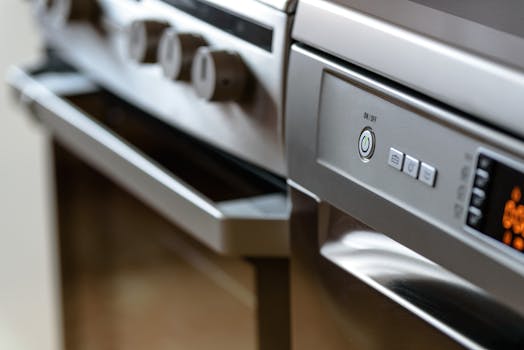Advantages and Disadvantages of Using a Self-Cleaning Oven: Special Functions
Self-cleaning ovens have become a popular choice for many households, offering a convenient solution to the often tedious task of oven cleaning. These appliances utilize high temperatures to incinerate food residues, making the cleaning process easier and more efficient. However, like any technology, self-cleaning ovens come with their own set of advantages and disadvantages. This article explores these aspects, focusing on the special functions that enhance their usability.
Advantages of Self-Cleaning Ovens
Self-cleaning ovens provide several benefits that can significantly improve the cooking experience. Here are some of the key advantages:
- Time-Saving: The self-cleaning function can save hours of scrubbing and scraping. Instead of spending time cleaning, users can simply set the oven to self-clean and attend to other tasks.
- Effective Cleaning: The high temperatures (up to 900°F) used during the self-cleaning cycle effectively burn off food residues, grease, and grime, leaving the oven nearly spotless.
- Reduced Use of Chemicals: Traditional oven cleaners often contain harsh chemicals. Self-cleaning ovens minimize the need for these products, making them a more environmentally friendly option.
- Convenience: Many modern self-cleaning ovens come with programmable features, allowing users to set the cleaning cycle to start at a convenient time, such as overnight.
- Improved Hygiene: Regular self-cleaning can help maintain a hygienic cooking environment by eliminating bacteria and odors that can accumulate in a dirty oven.
Disadvantages of Self-Cleaning Ovens
Despite their advantages, self-cleaning ovens also have some drawbacks that potential buyers should consider:
- High Energy Consumption: The self-cleaning cycle requires a significant amount of energy, which can lead to higher utility bills. According to the U.S. Department of Energy, self-cleaning cycles can consume up to 2-3 times more energy than regular cooking.
- Heat Emission: The high temperatures used during the cleaning process can cause the kitchen to become uncomfortably hot, especially in smaller spaces.
- Potential Damage: Some users have reported that the extreme heat can damage oven components over time, leading to costly repairs or replacements.
- Odor and Smoke: The self-cleaning process can produce unpleasant odors and smoke, which may be bothersome, particularly for those with sensitivities or allergies.
- Not Suitable for All Ovens: Certain types of ovens, such as those with a porcelain finish or older models, may not be designed for self-cleaning, limiting options for some consumers.
Special Functions of Self-Cleaning Ovens
Modern self-cleaning ovens often come equipped with special functions that enhance their usability. Here are some notable features:
- Steam Cleaning: Some self-cleaning ovens offer a steam cleaning option, which uses lower temperatures and moisture to loosen food residues. This method is less energy-intensive and can be more suitable for light cleaning.
- Delay Start: This feature allows users to program the oven to start the cleaning cycle at a later time, providing flexibility and convenience.
- Locking Mechanism: Many self-cleaning ovens include a locking feature that prevents the door from being opened during the cleaning cycle, ensuring safety.
- Smart Technology: Some models are equipped with smart technology, allowing users to monitor and control the cleaning process remotely via smartphone apps.
Conclusion
Self-cleaning ovens offer a blend of convenience and efficiency, making them an attractive option for busy households. Their ability to save time, reduce the use of harsh chemicals, and maintain a hygienic cooking environment are significant advantages. However, potential buyers should also weigh the disadvantages, including energy consumption, heat emission, and the possibility of damage over time. Understanding the special functions available in modern self-cleaning ovens can help consumers make informed decisions that best suit their cooking needs and lifestyle. Ultimately, the choice to invest in a self-cleaning oven should align with individual preferences and household dynamics, ensuring a balance between convenience and practicality.
